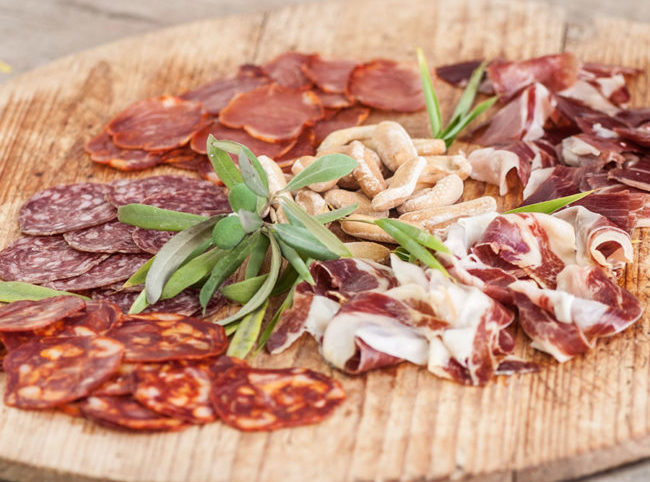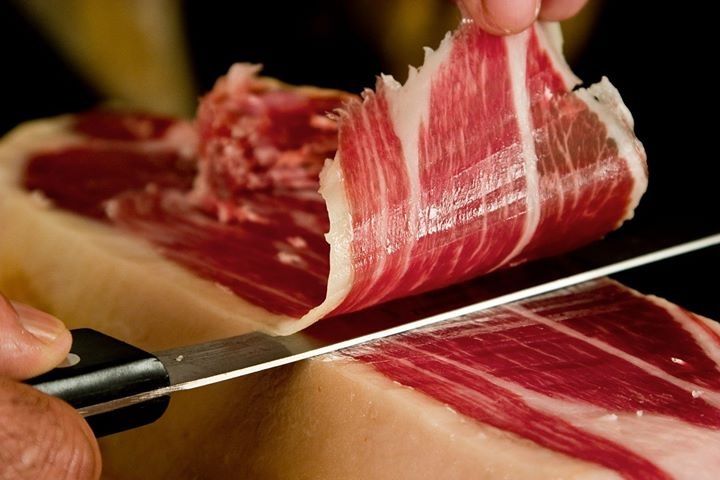
Writes: Miriam López Ortega
When we talk about a Pata Negra we all think of a ham of the highest quality. Just hearing this term inevitably makes our mouths water. In the previous March article I already explained the different types of Iberian ham what there is and its differences. We have to be clear that not all Iberian ham is the same. For example, you should know how to Identify a black leg.
Pata Negra only corresponds to 100% Iberian Bellota Ham. The highest quality, that is, hams that come from 100% Iberian breed animals. In addition, during the period of Montanera (October-March) they have been fed in freedom in the pasture. Through acorns, grasses and resources of this ecosystem. It is none of the others eight types of hams that fall within the Iberian classification. This according to the 2014 standard.
Clearly the 100% Iberian Bellota Ham, the jewel of our gastronomy, is the only one that can be legally called Pata Negra. It is the minority percentage of the entire sector. It only represents a 6,19% on the total, which makes it a much more exclusive product. Now, you must know how to identify a black leg, once known this previous.
Identify a black leg: look and know the labeling
Today I am going to give you some clues to detect a Pata Negra ham. After leaving the last rule of the Iberian, changes have been made to the labeling of hams. They will provide us with information at a glance and can help us to identify it. The first thing to look at is:
1) El seal bring the Jamon. The seal is a bridle that all hams carry. In the case of 100% Iberian Bellota Ham must comply with the following aspects:
- Must be from Color black. The rest of the colors are for another type of hams.
- You must wear the ASICI logo (Interprofessional Association of the Pig Iberico).
- Or that of a Protected Designation of Origin (Guijuelo, Meadow of Extremadura, Jabugo or Los Pedroches). According to the Denomination of Origin, the seal must be only that of the denomination or it can carry both. The one with the DOP and of ASIC.
Be careful because there are manufacturers that produce out of norm or PDO. They use the black color on their seals seeking consumer confusion.
- Finally, it must bear the mention of the what kind of ham is it, in this case: Acorn 100% Iberian.
All of this comes first. Identify a black leg that easy.
2) La label bring the Jamon. In addition to wearing a seal as we have explained before, it must be accompanied by a vitola or sale label. We have to differentiate between seal and label, since it is not the same. This label should indicate:
- The type of product: Ham or Shoulder.
- The type of food: Acorn.
- The race: 100% Iberian.
- The company name who has certified it.
Watch out for the picaresque and watch out for suspicious promotions
In the case of hams from PDO, identify a black leg with something else, since the labeling must include the seal or logo of yellow and red color. This identifies a product with Protected Designation of Origin.
3) The stamp MAP or date of entry into salt. By law, all ham makers have to indicate on each ham the date on which the piece has entered salt. They have several ways of including it. One of the best known in the sector is through a stamp marked in ink or fire on the same piece.
Is named MAP stamp. They can also include it in a label. This stamp indicates the week and year in which the ham has gone into salt. Therefore, it is at the moment that his healing.
It is important to know the moment of that healing
Normally the pieces that go into salt from week 52 (December) to 14 (March) are pieces that usually come from pigs that have been in montanera. Fed on acorns and herbs during the last fattening season before slaughter.
In the main image of this article, we can see the figure of a ham that has entered salt in week 05 (corresponds to the month of January) of the year 2017. In this case, long months of healing they wait for you until we can taste it. Within this week we could deduce that the animal has been acorn fed, we can look at the seal and band to confirm this information.
To make sure if it is a 100% Iberian breed, To be considered Pata Negra, you must meet both requirements. First, having been fed with acorns and natural grasses in the pasture. Second, come from a 100% Iberian animal.
Important factors in acorn-fed ham
To consider a Jamon, the norm establishes that the animal has to enter the montanera from October 1 to December 15. Also establishing their sacrifice period between December 15 and March 31.
4) La healing Of the piece. The standard establishes for 100% Iberian acorn hams a minimum curing of 20 months for hams weighing less than 7 kilos. Then, 24 months for pieces equal to or greater than 7 kilos. No product can be considered Pata Negra with a minor healing. Through the MAP stamp we can also see the healing of the product.
5) El weight of the pieces. The standard establishes that for 100% Iberian acorn products the weight will be equal to or greater than 5,75 kilos. We will not be able to find pieces of lower weight. For the rest of Iberian hams a weight that is equal to or greater than 7 kilos is established.
In addition to all these aspects that must be fulfilled, the Pata Negra hams they also have a series of organoleptic characteristics. As the fluidity of bacon, the appearance of the thin or aromas y flavors so characteristic. I recommend that before you buy a piece you take a look at all the points that we have seen before. A) Yes, identify a black leg perfectly.
The best a professional and a trustworthy establishment
Before concluding I would like to tell you that it is not normal to find 100% Iberian acorn-fed hams in the points of sale below 300 euros. Average prices tend to fluctuate between the 400 and the 600 euros, depending on weights and others.
Even so, taking into account everything that they have on the back, they are hams that should cost twice as much. Remember that nobody gives hard to pesetas and I encourage you to demand when buying. I also recommend that if you want to enjoy a good piece of ham, go to specialized stores. Trusted sites where the person who attends you has knowledge to advise you depending on what you are looking for.
Not all Pata Negra they are exactly the same. You have to keep in mind that it is a handmade product. Therefore, each producer does it in their own way. The selection of the product, cures and their conservation They are also very important when it comes to finding a good ham.






